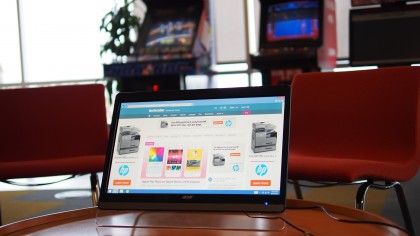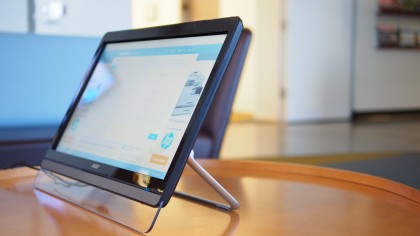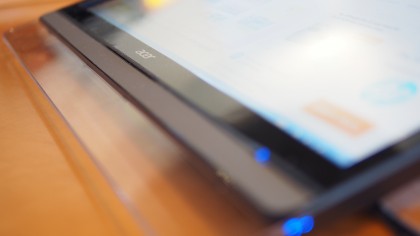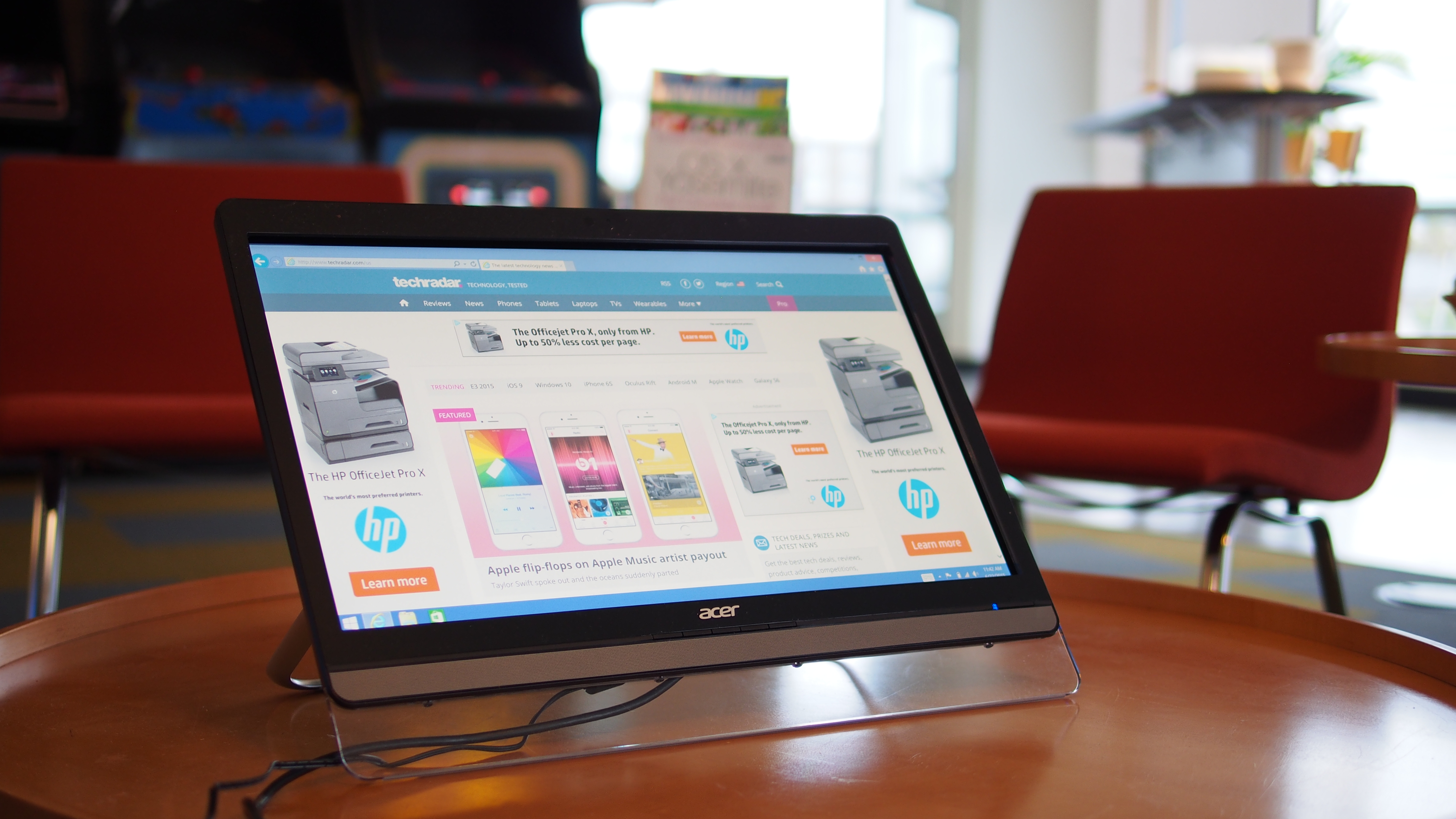TechRadar Verdict
The UT220HQL is an affordable way to add touch to your computing experience, especially if you're upgrading to Windows 10.
Pros
- +
Touch input support
- +
VESA-compatible
- +
Adjustable kickstand
Cons
- -
External power brick
- -
Screen not flush with edge-to-edge glass
- -
Slower screen refresh rates
Why you can trust TechRadar
Acer's UT220HQL ($199, £125, AU$255) is an excellent option for PC owners who want a larger display than what's available on a laptop, but also require a touchscreen. It's an easy way to add touch to an older PC or laptop to take advantage of all the gestures enabled on Windows 8, 8.1, and 10. For modern laptop owners, the built-in touch support on the UT220HQL is also a convenient way to gain the benefits of working on a larger panel without losing the touchscreen.
With a 21.5-inch full HD screen, the UT220HQL can be found for as little as $146 (£91, AU$187) at some online retailers. It's a very competitive offering considering that many other 21- to 24-inch panels cost about as much but don't include touch.
The Acer UT220HQL competes in the same space as full HD monitors like the 24-inch BenQ EW2440 ($220, £140, AU$285), 21.5-inch Samsung SD300 series ($149, £93, AU$191) and 22-inch LG 22MP57HQ-P ($159, £100, AU$204), but none of these options come with touchscreens. If you're willing to pay $100 more, Dell's 28-inch P2815Q display increases the screen size and bumps up the resolution to 4K, but takes away the touchscreen for $299 (£188, AU$386).
Design
The single piece design of the UT220HQL looks more like an all-in-one desktop PC than a monitor. The design reminds me of the 19.5-inch Acer Aspire ZC ($550, £346, AU$706) and 23-inch Aspire U5 ($850, £535, AU$1,091) AIO.

The UT220HQL comes fully assembled out of the box. The front is dominated by the 21.5-inch touchscreen, while a silver metal bar on the rear can be pulled down, like a kickstand, to turn the screen into an easel. The bar has quite a bit of resistance, which is good, so that you don't accidentally recline the screen to a larger angle of tilt when you touch it from the front.
Measuring 20.2 x 1.8 x 15.2 inches (51.31 x 4.57 x 38.61cm) and weighing 9.5 pounds (4.3kg), the UT220HQL technically doesn't take up that much space on a desk. However, the kickstand has to be open, and depending on how far back you want the screen to tilt, this means that the area the UT220HQL takes on your desk could equal the screen's front surface area of 20.2 x 15.2 inches (51.31 x 38.61cm).

The touchscreen panel is surrounded by a raised glossy black bezel, meaning that the display doesn't have a flush look with edge-to-edge glass, and this makes the design appear somewhat dated, like the discontinued Lenovo 3000 series C315 AIO from a few years ago. From a functional perspective, the beveled design makes the UT220HQL harder to wipe down and keep clean since dust can get trapped in the corners and edges between the screen and the bezel.
Just below the screen is a narrow strip of black plastic that conceals five springy hardware buttons in the center and a sixth power button on the far right side. Navigating the monitor's menus with the buttons is still tedious, requiring multiple button presses, but the presence of physical buttons is a definite upgrade over capacitive touch buttons on the BenQ EW2440 or the more discrete downward-facing buttons on the flagship S277HK.

Below the buttons is a 0.75-inch strip of dark silver that houses the speaker, and below the speaker is a long strip of lucite plastic that measures two inches wide.
The plastic makes the display appear like it's floating, but in reality makes cable management harder as you can see right through the base. I personally didn't care for the clear plastic strip on the bottom, as I felt that it makes the display look disjointed moving between the glossy black, mesh silver speaker grill and clear plastic.
